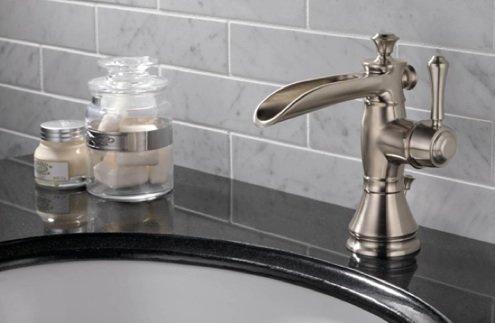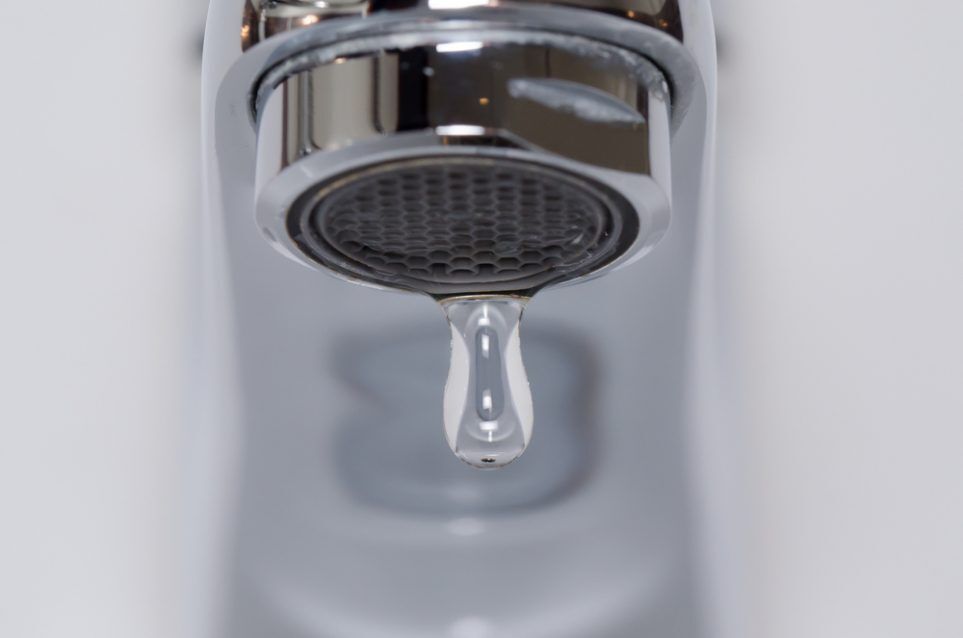Which It's Required to Deal with a Malfunctioning Faucet
Which It's Required to Deal with a Malfunctioning Faucet
Blog Article
Were you in search of insight about What Causes Leaky Faucets & How To Fix Them?

Trickling taps could feel like a small inconvenience, but their effect exceeds just the annoyance of the sound. From wasting water to incurring unnecessary economic expenses and wellness risks, neglecting a trickling tap can cause different repercussions. In this short article, we'll delve into why it's essential to address this typical family issue without delay and efficiently.
Waste of Water
Environmental Impact
Dripping taps add dramatically to water waste. According to the Epa (EPA), a solitary tap leaking at one drip per second can throw away more than 3,000 gallons of water per year. This not just stress water resources but also affects ecological communities and wild animals dependent on them.
Step-by-Step Guide to Taking Care Of a Dripping Tap
Devices Called for
Before trying to deal with a leaking faucet, collect the needed tools, including a flexible wrench, screwdrivers, replacement components (such as washers or cartridges), and plumber's tape.
Common Tap Issues and Their Solutions
Determine the type of tap and the particular issue creating the drip. Typical problems consist of worn-out washers, rusty valve seats, or damaged O-rings. Refer to manufacturer directions or online tutorials for detailed support on repair work.
Financial Prices
Enhanced Water Bills
Past the environmental influence, leaking taps can inflate water costs significantly. The accumulated wastefulness in time converts into greater utility costs, which could have been prevented with prompt repair services.
Prospective Building Damage
In addition, extended dripping can bring about damage to components and surfaces bordering the faucet. Water build-up can cause staining, deterioration, and even structural issues if left unattended, causing additional repair service prices.
Health Worries
Mold and Mildew Development
The constant existence of moisture from a leaking tap produces an excellent environment for mold and mildew and mildew development. These fungis not only endanger indoor air high quality however also pose health dangers, particularly for people with respiratory conditions or allergies.
Waterborne Illness
Stagnant water in dripping taps can become a breeding place for bacteria and various other pathogens, boosting the threat of waterborne diseases. Impurities such as Legionella microorganisms grow in stationary water, potentially bring about serious diseases when ingested or inhaled.
DIY vs. Expert Repair
Benefits and drawbacks of Do It Yourself Repair Work
While some may attempt to repair a trickling tap themselves, DIY repairs come with their own collection of obstacles. Without correct understanding and devices, do it yourself efforts can worsen the concern or bring about insufficient repair work, lengthening the trouble.
Advantages of Hiring a Professional Plumber
Employing an expert plumber makes sure that the underlying reason for the trickling tap is dealt with effectively. Plumbing technicians possess the proficiency and equipment to detect and repair tap concerns successfully, saving time and decreasing the danger of further damages.
Environmental Duty
Private Payment to Preservation
Taking obligation for fixing dripping faucets aligns with more comprehensive initiatives towards water preservation and environmental sustainability. Every person's actions jointly make a significant impact on maintaining valuable resources.
Lasting Living Practices
By focusing on prompt repair services and adopting water-saving behaviors, individuals add to sustainable living practices that benefit both existing and future generations.
Preventive Measures
Normal Maintenance Tips
To avoid leaking faucets, perform routine maintenance such as cleaning up aerators, checking for leakages, and changing worn-out parts promptly. In addition, think about mounting water-saving devices or updating to more effective fixtures.
Value of Prompt Repair Works
Resolving dripping taps as soon as they're seen stops further water waste and possible damages, eventually conserving both water and money in the future.
Impact on Residential Or Commercial Property Worth
Perception of Well-Maintained Residential Property
Maintaining a property in good condition, consisting of dealing with maintenance problems like dripping taps, improves its regarded value and worth among prospective customers or lessees.
Impact on Resale Worth
Residences with well-maintained plumbing components, including taps, command greater resale values in the property market. Dealing with trickling faucets can contribute to a favorable impression during building inspections and negotiations.
Conclusion
Dealing with a leaking tap surpasses mere convenience; it's a necessary action toward saving water, minimizing economic prices, and guarding health and home. Whether with do it yourself repairs or specialist aid, taking action to deal with trickling taps is a tiny yet impactful way to promote accountable stewardship of sources and add to a much healthier, a lot more sustainable future.
How to Fix a Dripping or Leaky Faucet
A leaking faucet is one of the most common problems that homeowners encounter, but it being commonplace doesn’t make it any less annoying. The constant drip drip drip of a leaking bathtub faucet, showerhead, or sink tap can disturb your home’s serenity. Left neglected, a dripping faucet can also result in higher water bills and discoloration or mold growth in your sink or plumbing fixtures.
Fortunately, you don’t have to be a trained plumber to know how to stop a dripping faucet. With some basic tools, replacement parts, and a little patience, leaky faucet repair is a breeze. In this article, we’ll explain what causes dripping faucets and how you can fix them.
What Causes a Leaking Faucet?
Kitchen and bathroom faucets come in all manner of designs, but most involve some combination of valves, O-rings, seals, and washers. The O-ring is usually the weakest link, but any one of these pieces can wear down over time. Heat, moisture, temperature fluctuations, minerals, mold, and movement can contribute to warping and corrosion, breaking the watertight seal. This just comes with the territory of being a homeowner. Everything is always subject to wear and tear, and some component parts of your appliances and fixtures need to be replaced on occasion. At least replacement O-rings are cheap!
More rarely, dripping faucets can be a symptom of excessively high water pressure. Were this the case in your home, you would probably notice that the leak is not isolated to one faucet. Water pressure issues are harder to resolve on your own. We recommend contacting a professional plumber if you suspect your water pressure is too high.
How to Fix a Dripping Faucet
Pipe wrench or monkey wrench Allen wrench set Screwdrivers Old towel or rag Shut off the water.
Before you do anything, you need to turn off the water to keep from drenching your kitchen or bathroom. You should find a valve under the sink and against the wall. Once you’ve turned this valve, try turning the faucet on to confirm that the water source has been cut off.
If you can’t locate your local valve for the faucet you’re working on, you can always shut off the water to the house at the main valve. Of course, this will prohibit anyone from using the sinks, showers, or toilets while you’re working on the faucet that’s giving you trouble.
Plug or block the drain.
You’ll be disassembling the faucet and removing some small bits of hardware. Plug the drain with a stopper or rag to avoid the possibility of a small screw falling into your P-trap.
Take apart the faucet assembly.
There are several varieties of kitchen and bathroom faucets, each with its own manner of assembly. For detailed instructions on how to disassemble your faucet, you can refer to the fixture’s manual or contact the manufacturer. If you know whether you have a ball, disc, cartridge, or compression faucet, you can find detailed schematics online.
In general, you need to begin by removing the faucet handles. You might notice a small screw that you’ll need to remove with a screwdriver or Allen wrench. If you don’t see any visible securing hardware, it’s likely hidden under a decorative cap that can be unscrewed or popped off with flathead screwdriver.
Remove each piece methodically, consulting a schematic when necessary. Take notes or arrange the pieces in such a way to make it easier to correctly reassemble the faucet later.
Remove the cartridge.
Once you’ve removed the handles and securing hardware, you should be able to remove the valve cartridge or stem. Some cartridges will slide right out. Other faucet models will require you to loosen a nut with a pipe wrench before you can remove the valve stem.
Examine the exposed hardware.
With the cartridge or stem removed, inspect the component parts. Check the rubber O-rings for wear and tear. Also examine the seat washer for corrosion or other damage. These pieces are usually the responsible parties for a dripping faucet, but it’s worth inspecting the other component parts while you have the faucet disassembled.
Find replacement parts.
Once you’ve identified which faucet component has failed, find an identical replacement. Your local hardware store should have O-rings, seat washers, and other standard components in stock. If you have a luxury or uncommon faucet, you may have to contact the manufacturer for a replacement part.
It’s a good idea to take your old parts with you to the hardware store so you can compare them with the store’s inventory and be sure you’re purchasing the correct replacement.
Reassemble the faucet.
With your new parts in hand, reconstruct the faucet and handles. Don’t be tempted to overtighten screws or nuts. You might think this could create a better seal, but it can instead damage or bend a delicate part of the assembly and create a new problem for you.
Turn on the water and test the faucet.
The only thing left to do is test your work. Unplug the sink, turn the water back on, and try the faucet. Congratulate yourself on a job well done!
https://www.libertyhomeguard.com/how-to-fix-a-dripping-or-leaky-faucet/

As an avid person who reads about Why Is It Important To Fix Your Leaking Tap/Faucet?, I figured sharing that blog post was essential. For those who enjoyed our blog post please don't forget to pass it around. We thank you for reading our article about Why Are My Faucets Dripping (And Can I Fix It Myself)?.
Report this page